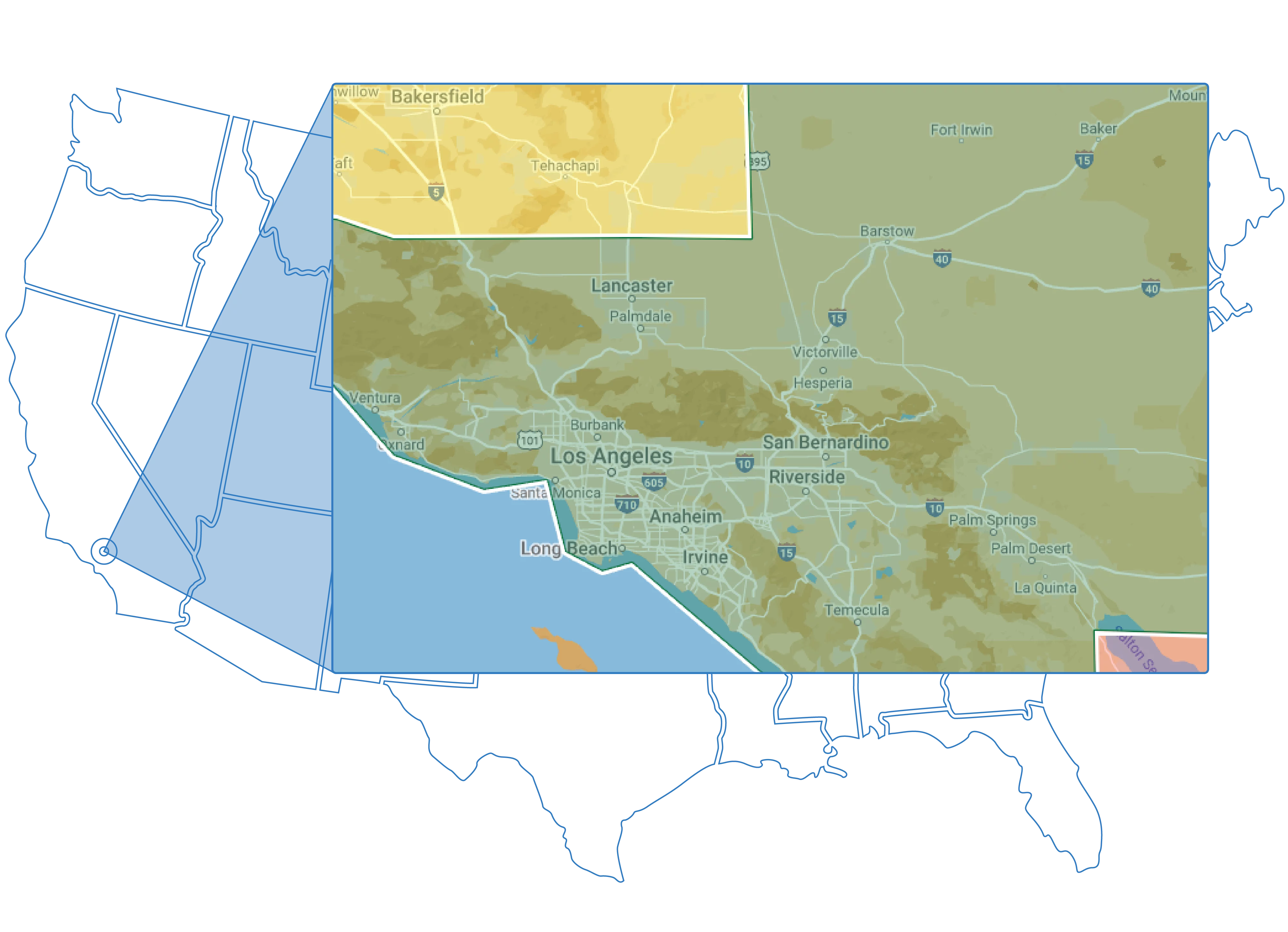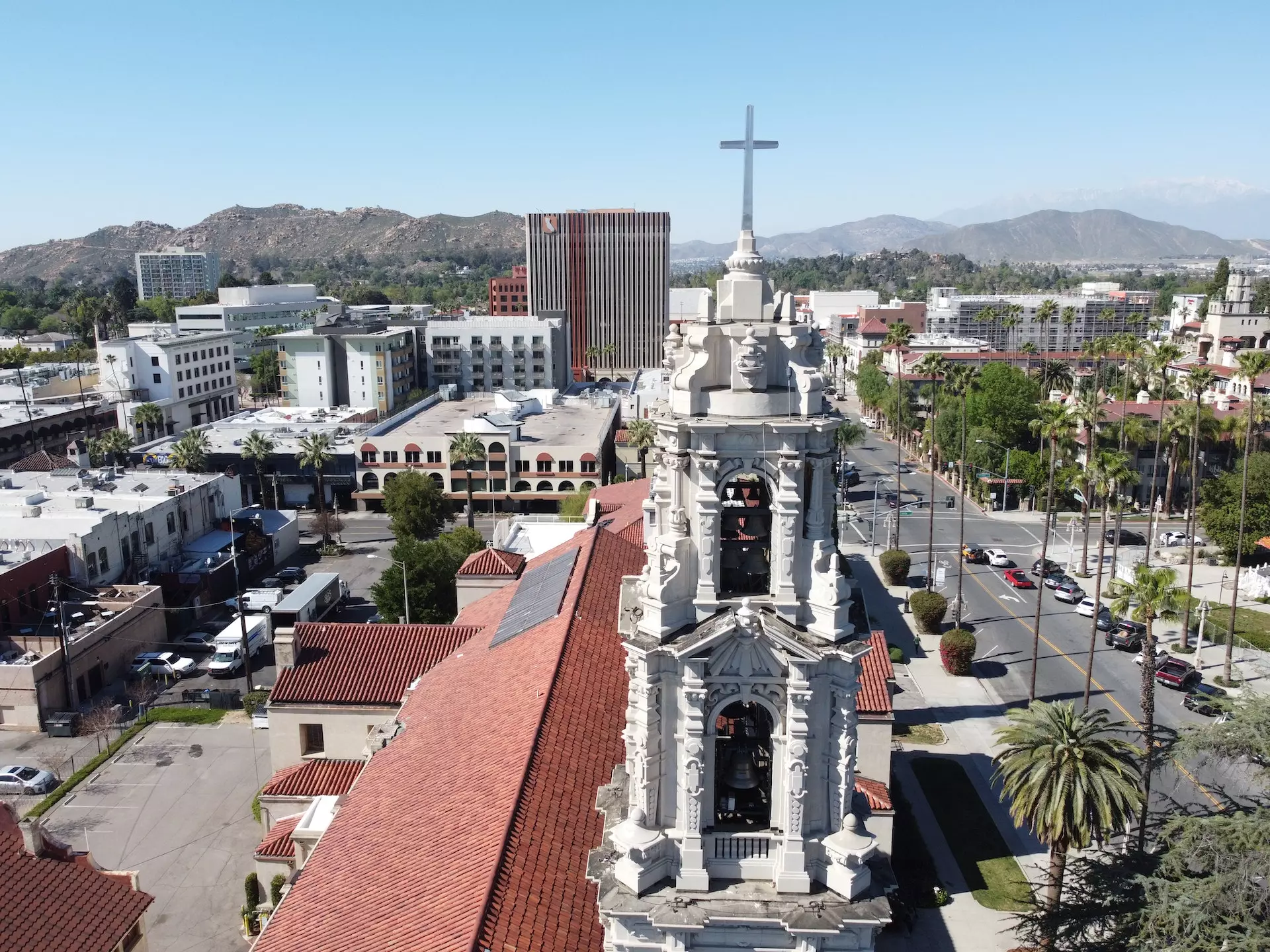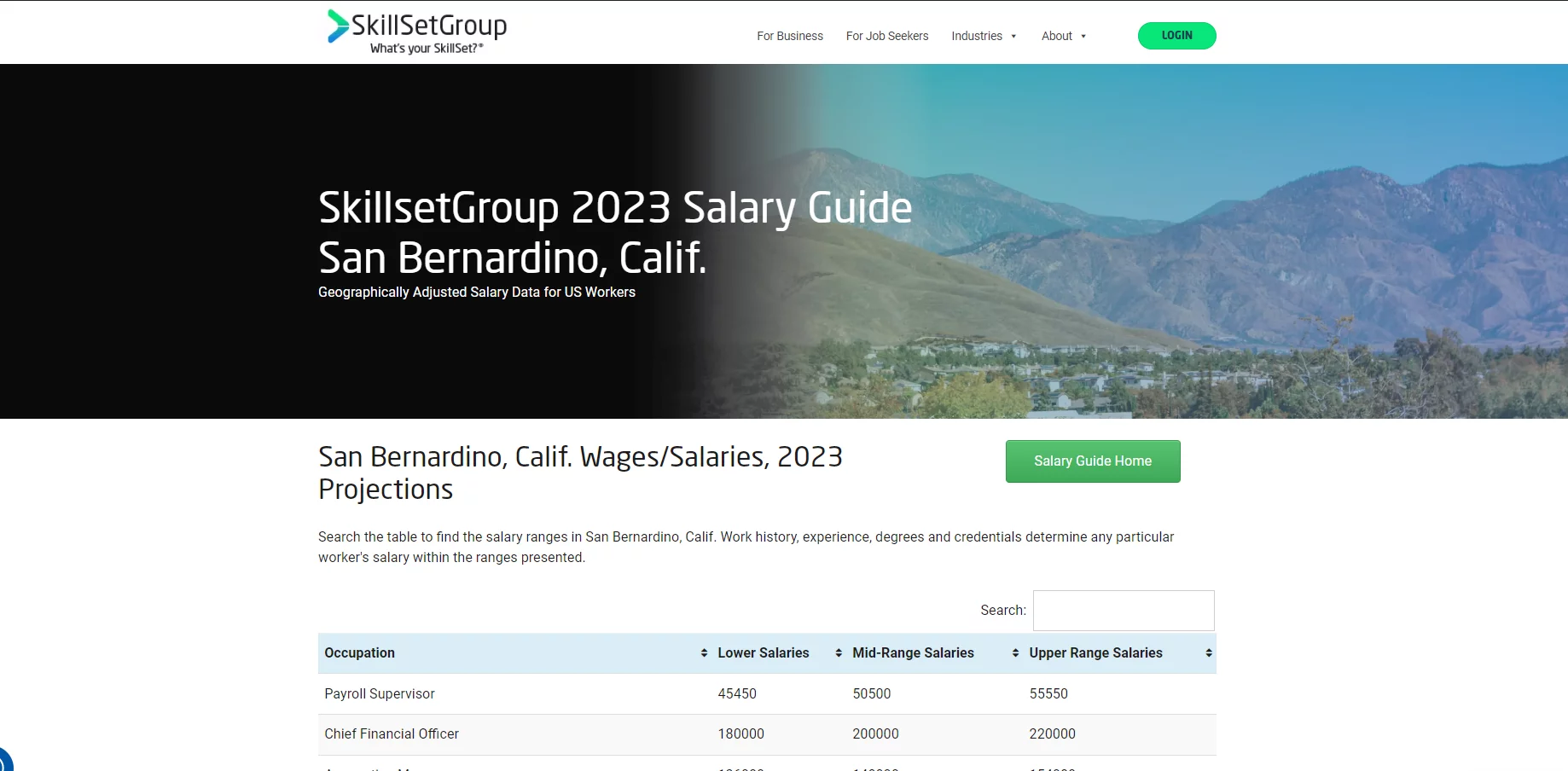
| Map Key: Median Annual Household Income by Region | |
| Upper Income Region | $79,000 - $90,000 |
| Upper-Middle Income Region | $66,000 -$78,000 |
| Middle Income Region | $61,500-$65,500 |
| Lower-Middle Income Region | $57,000 - $61,000 |
| Low Income Region | $21,000-$54,000 |
San Bernardino – Riverside is the part of California that’s still booming – warehouses, logistics and distributions centers have sprung up in the thousands in the last decade.
The economic development even has some residents pushing back against the smog and traffic the burgeoning logistics sector has added to the neighborhood in recent years.
This construction has taken advantage of the sprawling, arid landscape – the same landscape that helps make residential units far cheaper than coastal cities.
Despite a temporary dip in population in 2020, the San Bernardino-Riverside metro area is roaring back after the pandemic.
Are San Bernardino and Riverside Counties Growing?
Yes. Though California lost population to other states, on-balance, over the past five years, San Bernardino and Riverside counties experienced their own local population booms. These relatively cheaper counties scooped up some of the families taking part in the mass exodus from Los Angeles and the San Francisco Bay Area.
From 2010 to 2021, according to the U.S. Census, California gained 5.1 percent in population. This takes into account the mass exodus of hundreds of thousands from California coastal cities and other expensive locales that has happened since the COVID-19 pandemic in 2020. California’s population has shrunk by more than 300,000 since 2020, despite expanding overall during the last decade.
Riverside and San Bernardino counties, however, beat the California population growth rate and the national growth rate over the same time period. Riverside’s population in 2021 was up 11.7% from 2010 to 2.5 million, whereas San Bernardino grew 7.5% during the same period to 2.2 million.
How Much Can I Make in San Bernardino?
Wages in Riverside and San Bernardino are significantly lower than the on the coast across industries. These include industrial labor, administrative, accounting, finance, and skilled trades positions that SkillsetGroup tracks in its salary guides.
The notable exceptions are specialized engineers and IT professionals across-the-board.
See our geographically adjusted 2023 salary guides for more detail:
SkillsetGroup’s expert recruiters predict salaries across IT specialties will be up roughly 20% in most markets in 2023.
Furthermore, both IT professionals and specialized engineers will have more market power with employers throughout California in 2023. Add the expanding adoption of remote work, and you have an engineering and IT talent pool that doesn’t have to take lower wages, even if the cost of living in Riverside or San Bernardino is lower than LA or San Francisco.
As a result, we think 2023 market wages for an aerospace engineer or DevOps specialist will look pretty similar from San Franciso, to San Bernardino, to LA, to San Diego.
For example, a payroll supervisor in San Francisco can average $78,500 per year, while the same position in San Bernardino or Riverside pays only about $50,500 on average.
But a specialized software professional hired in 2023 as a back-end developer can expect to average roughly $190,000 anywhere in California.
What Is the Cost of Living in San Bernardino?
Pandemic-related inflation walloped the Riverside-San Bernardino areas. It was up a whopping 9.4 percent, year-over-year in summer of 2022. This significantly outpaced the rest of California, likely because prices started out lower. The San Bernardino-Riverside metro area is one of the last affordable ones in Southern California for middle class families.
You can still reasonably access the coastal cities with an extended commute from either of these cities, and hybrid-remote work is only growing in popularity -- both factors further feeding Inland Empire population growth.
But because of those factors, demand sent prices skyrocketing for consumer goods and services, and, more importantly, home prices.
Even as the housing market in the Inland Empire cooled in summer of 2022, prices were still up about 10 percent, compared to pre-pandemic. The median selling price in San Bernardino in 2022 was $504,000 and in Riverside was $565,000.
Though out of reach for many families from more affordable states, homes in Riverside and San Bernardino were selling far below the SoCal median of $710,000 and the statewide median that is hovering between $800,000 and $900,000.
This is quite the market turnaround in a decade – in 2010, the Inland Empire was still reeling from the impact of the 2008 subprime lending crisis that cratered housing prices there more than almost any other locale in the U.S. Lenders foreclosed on thousands of families, forcing them into rentals or out-of-state and tanking prices in the area.
In fact, this crash likely helped set up the booming demand for Inland Empire real estate we’re seeing now.
Kfir Mordechay
Pepperdine University
Dec. 2019
“Net County-to-County Migration Flow (5-year estimate) for San Bernardino County, CA”
FRED Economic Data by the St. Louis Federal Reserve Bank
“California’s Inland Empire lures more residents as more flee pricey coastal cities”
Nov. 22, 2021
TheRealDeal San Francisco Real Estate News



